Love your Leads! Game-Changing Lead Generation and Management Tips for B2B SaaS Companies
Every B2B SaaS organisation will ask this question at some point: "how do we generate more leads?"
The not-so-simple answer is that there are so many lead generation strategies for SaaS marketing and sales teams that it's hard to know which tactics to trust!
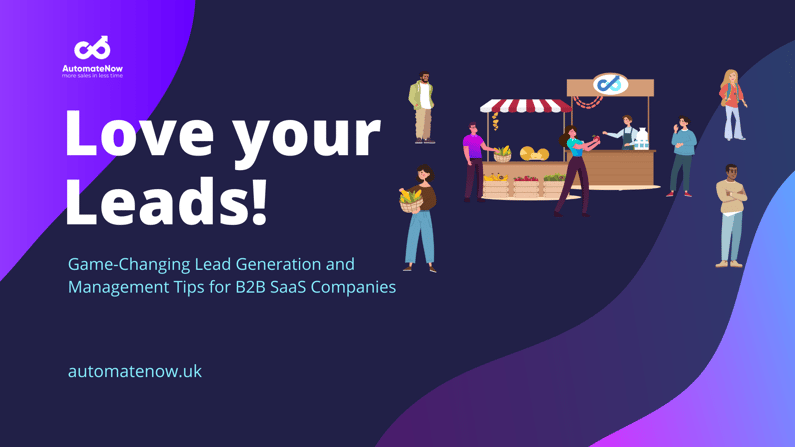
It's easy to get wrapped up in buzzwords like content marketing, lead nurturing, and conversion rates - but without a solid understanding of the basics of B2B lead generation and management, those tools are like trying to build a fancy house on a shaky foundation.
Generating and nurturing high-quality sales leads is crucial for any SaaS business looking to grow in a smart, scalable, effective way. So while there's huge focus (and with good reason!) on the different ways to generate leads, we offer you a different question: once you've become a lead magnet, how do you go about managing leads so that they convert into happy, satisfied customers?
In this article, we go over the basics of understanding lead generation - from a new lead, right up to them becoming a new customer. We'll talk about some game-changing approaches, tips, and tactics (and our favourite tool, HubSpot!) for helping you pump up that sales funnel, spark interest in your product, nail your marketing campaigns, and so much more.
This is a detailed article, so check out this list of powerful lead generation strategies we cover to turn your business into a lead magnet:
- Understanding SaaS Lead Generation
- Explaining the Buyer's Journey
- Defining Terms for SaaS Lead Generation
- Potential Customer Mapping Made Simple
- Leveraging Your CRM
- Your CRM & First-Party Data
- The Tiered Approach for Leads
- SEO Strategies for Lead Generation for B2B Marketers
- Content Matrix: Down the Rabbit Hole
- The Best B2B Content is Human
- Make Prospects Feel Like They Know You
- The Power of Account-Based Marketing
- Setting Better Buyer Expectations
- Don't Let the Sale Revers After You've Sold!
- Tracking Sales Readiness, Deal Management, and Ongoing Nurturing
- When Timing is Everything
- Raise the Sales Standard
- Why The Real Sale Starts When the Deal Closes
Understanding SaaS Lead Generation
Let's begin at the beginning. What do we mean, when we say "lead generation"? In simple terms, lead generation refers to the process of identifying, qualifying (you can also consider this "filtering", and nurturing potential customers until they're ready to buy your product or service.
Smart lead generation is especially important for SaaS companies. Why? A SaaS sale can be a slow, tricky, and technical challenge.
Even with the best marketing campaigns, SaaS products are often designed to meet highly specialised needs that can't always be communicated instantly, and the market can be viciously competitive.
To give your sales team every advantage, you need to be super-strategic about how you attract prospects, engage them, and develop relationships over time - that's where B2B SaaS-specific lead generation comes in.
Shop Talk: Explaining the Buyer's Journey (with veggies) 🥬

Rather than dive in with a technical explanation, let's explore leads from a more universal perspective.
To make sense of all the jargon-y terms associated with leads, let's talk about the buyer's journey for a moment.
In a nutshell, "the buyer's journey" is the process salespeople refer to when a prospective customer discovers your service, evaluates if it's good for them, and then chooses to purchase it (or not!).
That can feel a little abstract, though, so let's look at it this way.
Pretend your business is a brick-and-mortar shop on the high street. Folks pop in, and pop out - some people stay and buy, and some are regular customers.
In lead generation terms, anyone on the street could, in theory, be a prospective customer - or a 'lead'. But if your shop sells something specific, then by definition, it won't appeal to everybody.
Defining Terms for SaaS Lead Generation 🔬
Now let's imagine your shop is a beautiful greengrocer. Your prospective customers are going to be people who are looking to buy fruit and veggies. You won't be catering to vegetable-haters, or people who grow their own produce at home - and you wouldn't want to waste precious time trying to convert people who are so unlikely to buy from you.
When someone's aware that your shop exists (maybe they saw an advert or heard about you from a friend) and needs some organic spinach and a punnet of strawberries, they make a plan to pop in and see what you have.
In broad terms, they've moved from the 'general' pool of prospective leads, and have become an "MQL" - marketing qualified lead. They saw your marketing efforts, moved from an 'awareness' stage into a 'consideration' stage, and came to see if you have what they want.
Once they're in your shop, and chatting with you - the fruit and veggie expert - they tell you that they're looking for spinach and strawberries to make a delicious salad. You assure them, that you absolutely do have both of those things, but was there anything else they needed?
They think about the question, and conclude that some spring onions, basil, and a ripe avocado would make their salad sensational. On the plus side - you have all those things in stock!
That conversation is called "discovery", and is part of an MQL become an SQL - sales qualified lead. This is when your marketing and sales team have 'vetted' the lead, and know that your product or service is a great fit for their needs. This is when we move from the consideration phase of the buyer's journey to the purchase phase.
Your SQL feels ready and confident in their purchase decision, and though your organic produce is a little more expensive than the supermarket, they know their salad is going to be so much better because of it and pay cheerfully. Congratulations! You just turned a new lead into a happy, satisfied customer.
The best thing? HubSpot just keeps delivering value - their ‘managing transaction’ tool is perfect for looking after all the deals you’re proposing, and their ‘tickets’ tool ensures you can deliver incredible customer service, every time.
And when your customer is delighted with their experience, you just know they'll be coming back again. Oh, and they're going to refer you to all their contacts, too!
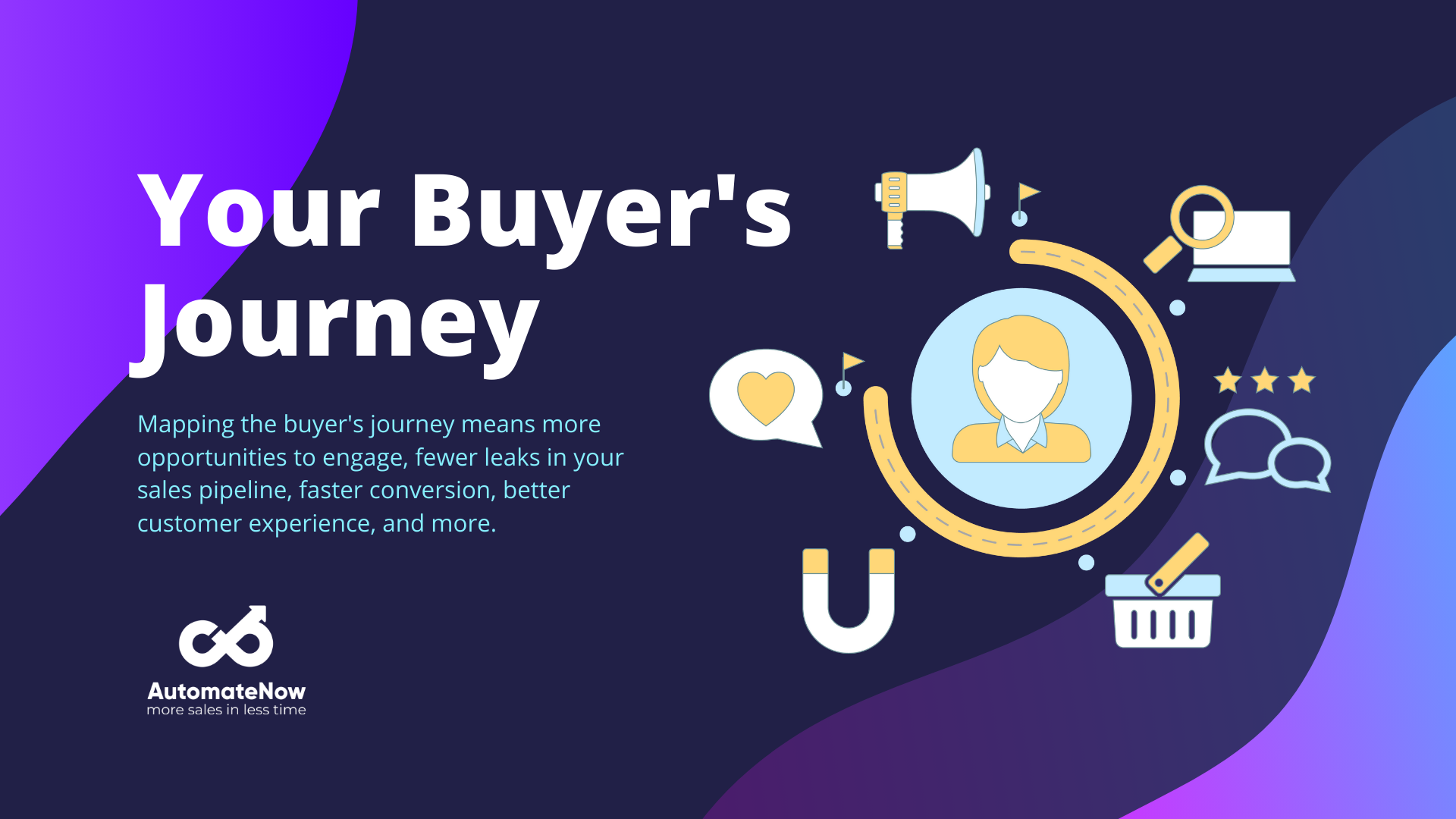
Why and How to Map Your Buyer's Journey 🗺️
Obviously, that was a pretty basic way to explain the buyer's journey - and you might be sitting there, craving salad, wondering what on earth any of this has to do with lead generation.
The reason is this: those who map the buyer's journey and are attentive to their prospect's needs as they go through the buying process are likely to be more empathetic and sensitive to that person, and will have better ideas for content marketing strategies that engage and interest them.
Mapping the buyer's journey means more opportunities to engage, fewer leaks in your sales pipeline, faster conversion, better customer experience, and more.
So how the heck do you actually map out that journey in the first place? Well, there are multiple ways to do this, from the simple and straightforward to a complex, non-linear approach.
Potential Customer Mapping Made Simple 😌
If you're just getting started, we'd recommend using the basic but effective approach of thinking about your customers using the five "W"s:
-
Who
-
What
-
Where
-
When
-
Why
Once you have that, plot the answers against those three stages we discussed earlier: out your typical buyer's journey by content stages. This will vary by product, but could look like:
-
Awareness: Think about the copy on your landing page, host an exploratory webinar, or write blog posts explaining the problem you solve;
-
Consideration: Create relevant eBooks, case studies, or whitepapers;
-
Decision: This is where your demos, free trials, and ROI calculators come in;
-
Purchase: Now you're in the realm of proposals, contracts, implementation plans, and follow-up emails (yes, even after you think you've closed the sale).
A word of warning: don't be tempted to go heavy on one stage and neglect the others! No matter how great your email marketing for saas is for an awareness stage, if you skimp on marketing strateges for the purchasing phase, all those lead generation efforts could go to waste.
Take the time to really plot how leads should move through each stage, and gather ideas together for the actions you can take to nurture quality leads. Testing and optimising this map will give your sales process a serious competitive edge.
Sitting on a Goldmine? Leverage that CRM!
Okay - so you've nailed demand generation. Your digital marketing campaigns are on fire, your cost per lead is where it needs to be, your inbound marketing is getting results, and lots of interest is coming in.
While the high of getting a tonne of new SaaS leads is intoxicating, we strongly recommend you look to your existing CRM database first.
You might have the ideal customer in your current database, and you don't even know it. Using a Smart CRM like HubSpot can help you spot all the gold you might have in your back garden (and how to dig it out with some smart marketing automation for saas tools, too).
Your CRM 🤝 First-Party Data
How do you know where to dig for that gold? You go to where the first-party data is.
Wait, what's first-party data? Glad you asked. That's data that your leads generate by filling out forms on your digital channels. You are allowed to collect that data because the lead has consented to give it to you.
Beyond its compliance with things like GDPR, first-party data is also one of the best indicators of genuine interest in B2B products and services.
According to the DMI, great sources of first-party data can include things like website or app behaviour, SaaS lead generation campaigns, online chat responses, subscriptions to your email newsletter, surveys, and so much more. The savviest SaaS companies use a blend of these data sources to create a more detailed picture of their ideal customer profile (ICP).
Based on the first-party data you collect, you can then segment contacts by attributes like industry, role, and past engagement. We love using HubSpot’s form solution for this. These forms use progressive fields to capture insights and you can create as many questions as needed to gather great intel on your lead - with a twist.
This approach is a game-changer because, unlike most forms, it asks smart questions. Depending on someone’s response, you can change the next queued question so you get much better information, without overwhelming your user.
Identify and close any gaps between your ideal customer profile and current lead - then create targeted campaigns to fill those gaps, engaging cold contacts while further qualifying existing leads.
For example, if your software product has just had an update that means it's now a great application for a new sector, create some B2B SaaS content specific to that industry. Or, if you need more decision-maker contacts, reach out to current leads for intros!
A Great Way to Generate Leads: The Tiered Approach 📈
Remember that ICP? You'll need that here. To tier your leads (so you can prioritise your sales efforts for the right prospect), create a list of qualities or 'attributes' in HubSpot to help you with lead scoring your contacts.
You might choose to tier your leads against things like deal size, authority, or job role. The neat part is that HubSpot can then automate reminders for you to get in touch with your Tier 1, Tier 2, and Tier 3 contacts!
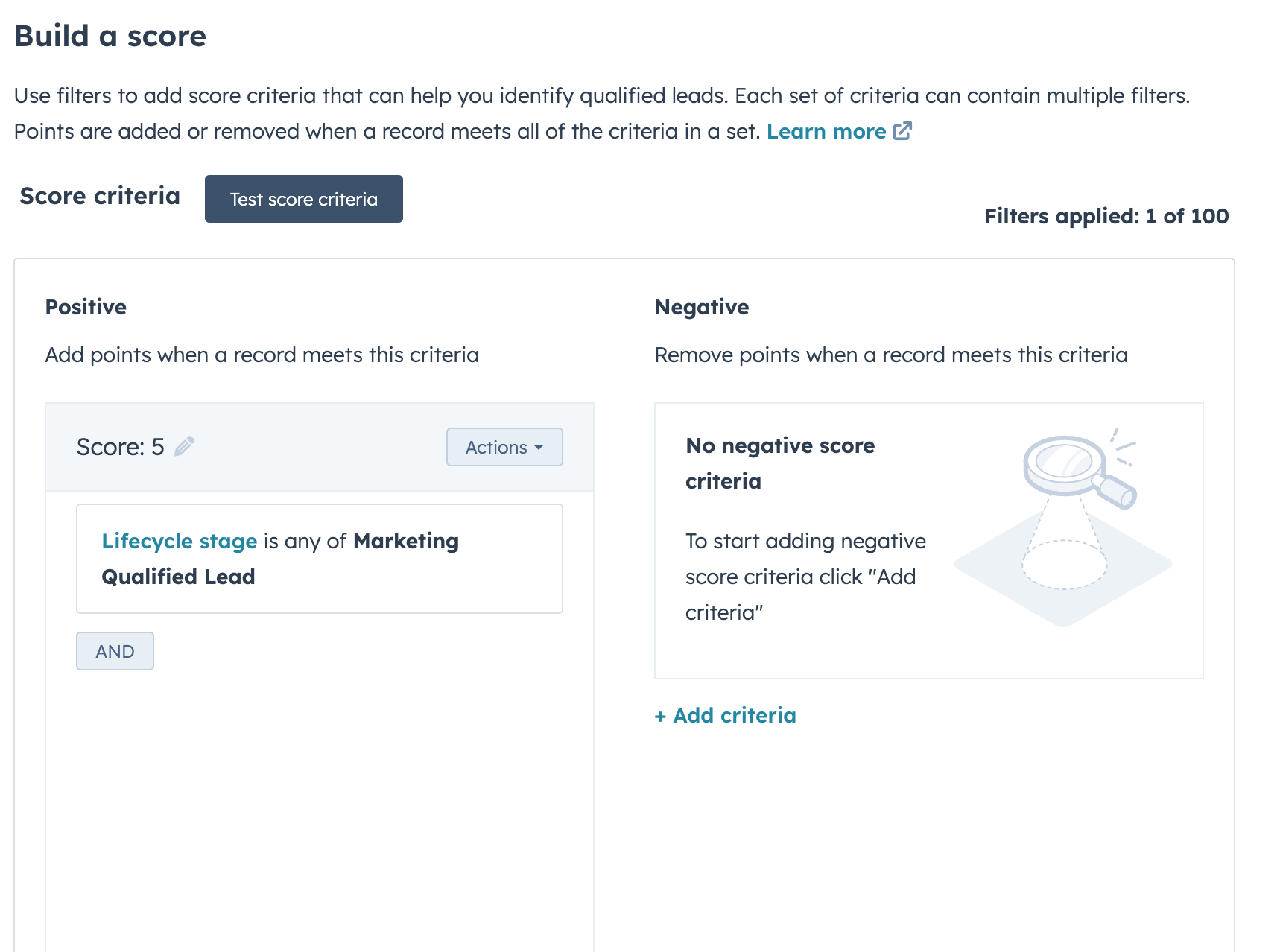
Example of lead scoring in HubSpot on the contact record.
It's a great way to take a lot of the disparate thinking out of successful SaaS lead generation, because your first-party data is a much better way of identifying what a client is actually looking for.
Not only does tiering your clients help focus your time, energy, and effort, but it also sets your prospects up for success because you're focused on solving the needs that they have identified. No more second-guessing or stumbling around in the dark.
SEO Strategies for Lead Generation for B2B Marketers
SEO might seem super-scary from the outside, but once you crack this as a tool, an SEO-driven pillar page of content can be a highly effective B2B SaaS lead generation tool for many SaaS marketers.
We love pillar pages as a key way to promote your expertise on a specific topic. What do we mean when we say pillar page? Organising your content in such a way that it drives and satisfies your customer's curiosity on a number of topics is a great way to draw leads in, demonstrate your expertise, and increase their interest in your business.
Content Matrix: Down the Rabbit Hole🐇
In shorter terms, we call these 'topic clusters', and linking the two together is called a content 'matrix'.
For example, if you have a page devoted to content marketing on your site as a parent or pillar topic, then all your cluster/child topics would be things like 'grammar fails', 'writing a compelling article', or 'how to hack your headline'. As everything is interrelated, this is now a content marketing matrix! It's a great way to show the breadth and depths of your expertise.
But what if you're moving beyond awareness, and now you need more inbound lead generation strategies?
This is where tailored content to a client’s specific problem becomes key. Remember that first-party data? This is the perfect time to build a sequence around someone's specific interest, make them feel valued, invite them to a webinar, or share an eBook that relates directly to their issues at hand.
The Best B2B Content is Human: Events, Webinars, Podcasts, and “In Person” Content
Have you heard of parasocial relationships? While we wouldn't normally reference Taylor Swift in an article, she's a great example of someone with whom millions, if not billions of Swifties feel like they have a relationship or connection.
Psychologists describe this feeling of friendship "parasocial" - meaning 'one-sided'. Despite never meeting Taylor, Swifties spend significant emotional energy, time, merch money, and interest in her - and she has no idea of their individual existence. The rise of parasocial relationships is largely due to social media, but despite sounding bleak in practice, this phenomenon offers a fantastic opportunity when it comes to lead generation.
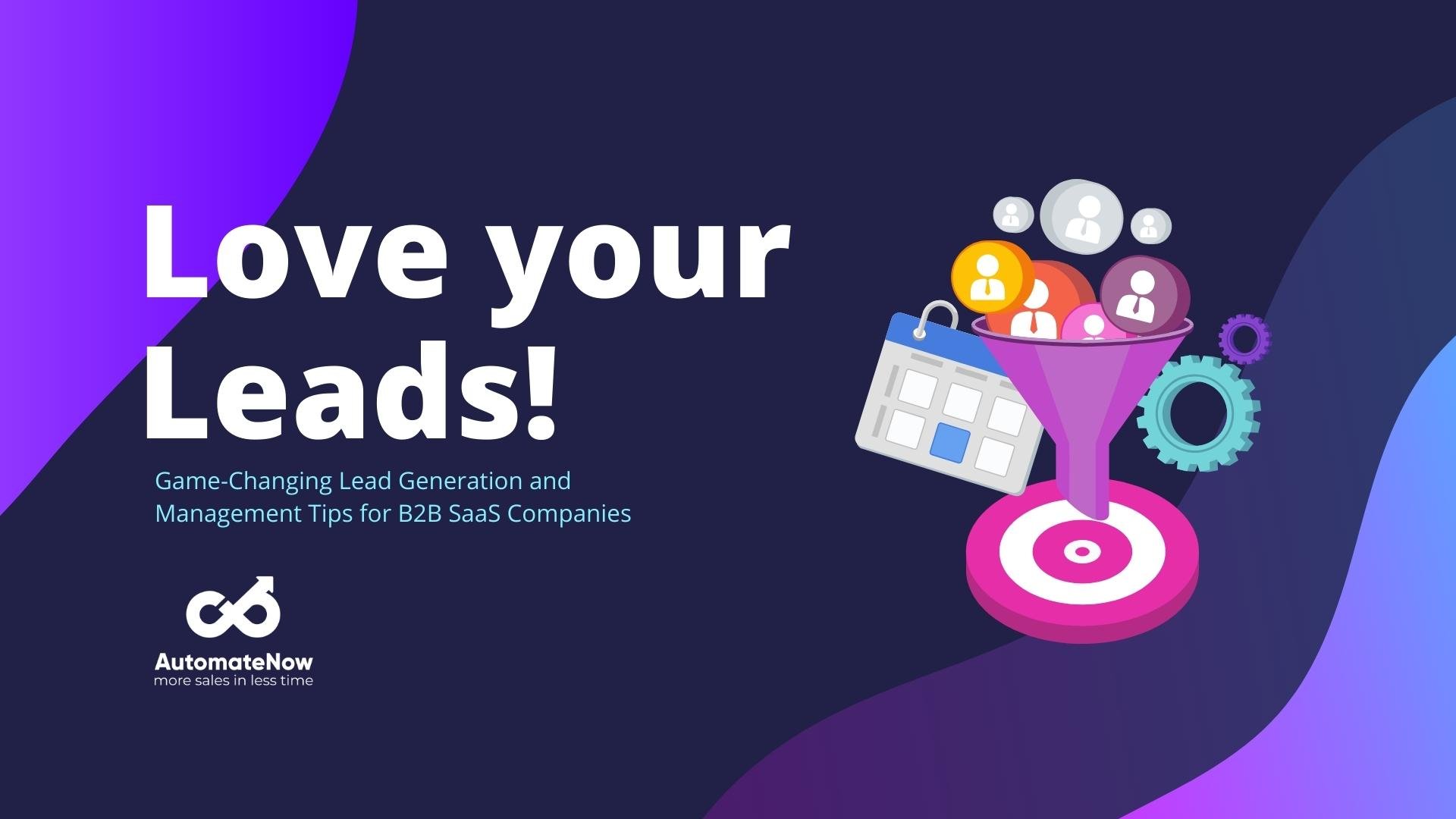
Make Prospects Feel Like They Know You Already 🫶
What's the best way to be seen? It sounds silly - but you have to put yourself out there. People buy from people - so create exciting, engaging events for people to attend, like subject-specific webinars or fireside panel chats.
We love the master content approach where you identify a key topic - let's say "specific software as a service solutions for the legal sector" - and then create different kinds of content (webinars, eBooks, podcasts, videos, and events) about that topic that address slightly different subjects.
Not only do you increase the likelihood of your prospects finding your content, but delivering it across multiple mediums creates a fantastic follow-up opportunity:
-
Did you come to our webinar? > Check out this related podcast!
-
Enjoyed our podcasts on the reasons for this business challenge? > See our Podcast
The human-to-human approach here is key. You have to make your content compelling - but once you've done that heavy lifting, you can create sequences that are triggered when someone signs up for something or submits a lead capture form. Remember, we're always looking for that first-party data, and that data is one of the best lead generation tools for tiering your prospects, enabling nuanced, specific follow-up.
The Power of Account-Based Marketing
![]() Let's talk about Account-Based Marketing (ABM) for SaaS companies. What is ABM, why do you need it, and how does it work? If you’re a SaaS provider, it’s very possible that your products are complex and meet a variety of different needs across a business.
Let's talk about Account-Based Marketing (ABM) for SaaS companies. What is ABM, why do you need it, and how does it work? If you’re a SaaS provider, it’s very possible that your products are complex and meet a variety of different needs across a business.
Making sure that you understand how your product adds value across different verticals can be a challenge if you’re going after individual sales, which is why ABM can be so powerful for SaaS sales when it comes to high-quality leads.
ABM is the art of targeting high-value accounts, rather than going after broader groups of prospects. In simple terms, it's a strategy implemented by a lot of SaaS companies who want to do business with a specific business or 'account'.
If you do take an ABM approach, you'll need to do significant research and identify key decision-makers, their needs and desires, their current clients, and more. Look for any contact gaps - do you have intel on some decision-makers, but not all? Once you fill those gaps, you can develop personalised campaigns with messaging that speak to each account’s needs.
Coordinate these touchpoints across your channels for maximum impact, and leverage your CRM (again!) to score your target accounts.
We particularly recommend using two key HubSpot tools here. First up, their Target Accounts solution, which helps you identify and set target accounts, as well as view high-level metrics at the top of your target accounts index page. These metrics give you essential snapshots - like whether you’re missing any decision-makers or buying roles.
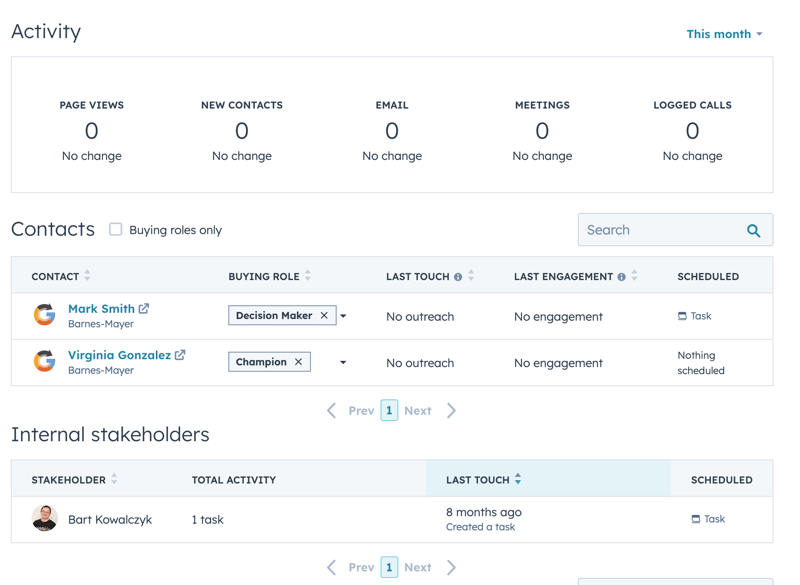
Example of Target Account in HubSpot
Secondly, and on a similar subject, if you’re not using HubSpot’s Organisation Chart integration, what are you waiting for? This smart chart shows the relationships you already have in a heat-map format, and helps you uncover gaps where you need to forge new contacts.
Finding Lead Conversion Tricky? Set Better Buyer Expectations
You might be great at lead capture, but it means very little if you don't convert your prospect. It's the equivalent of going viral - lots of folks might see what you do and be passably interested, but how many of those individuals take action afterward?
Lead generation and sales conversion go hand in hand. If you're just obsessed with SaaS lead generation tactics, and not following up with strategic actions to move those leads through the buyer's journey, you're being busy - not effective (check out these HubSpot stats for starters!).
It pays (quite literally) to realise that selling is an infinite game. But in the short term, as Harvard Business Review puts it:
"Anywhere between 40% and 60% of deals today end up lost to customers who express their intent to purchase, but ultimately fail to act."
This is why managing your leads is so much more important than just generating them. But it gets worse:
"These customers will often go through the entire sales process — consuming valuable seller time and organizational resources, perhaps even engaging in extended pilots or proof-of-concept trials — only to end up not crossing the finish line."
Don’t Let the Sale Reverse After You’ve Sold! ⏪
In a nutshell - create and build content and interactions that nurture your customer from close all the way to post-purchase onboarding.
As we've mentioned before, the sales process (for B2B companies especially) never really ends. From micro-engagements, like a quick update email letting your new client know what you've done for them today, to bigger pieces of work like newsletters, you have to keep educating and nurturing prospects after they’ve converted. If you don't work hard to foster loyalty and drive engagement, someone will come along and poach your clients.
How does a Smart CRM help you do this? Well, HubSpot workflows here are an ideal solution. Your new client needs to know what to expect once they start paying for your service. You can verbally assure them that they'll receive several welcome emails, a call from a customer success manager, and access to various resources - and then automate those in HubSpot so you can deliver over and above those expectations.
Sell Slow, Onboard Fast: Tracking Sales Readiness, Deal Management, and Ongoing Nurturing
So you're nailing your SaaS lead generation - now let's look at managing incoming leads using CRM workflows. Despite our stark warnings from the Harvard Business Review earlier, there is such a thing as trying to close a sale too early. What do we mean here? Simply put - if you try to take a lead from awareness to purchase without sparking interest in between, you might lose that customer for good. Yikes!

When Timing is Everything
You have to qualify your leads on their readiness for purchase. How do you do that? You consider key criteria, like budget, authority, need, and timing. These criteria together are known as BANT, and it's a handy set of questions to ask yourself when you're thinking about moving a prospect toward purchase.
-
Does this person or company have the budget to pay for my SaaS product or service?
-
Does this person have the authority to make a purchase decision, or does that lie with someone else?
-
Does this person really need what I'm selling, or is it a "nice to have"?
-
Is the time right for this person to engage and invest in our services?
In HubSpot, you can go one step further and ensure your sales reps are always asking the right questions by referring to lead-specific Playbooks. These tools make a huge impact on your prospect’s experience by ensuring all reps are consistent, informed, and aligned with the buyer’s journey.
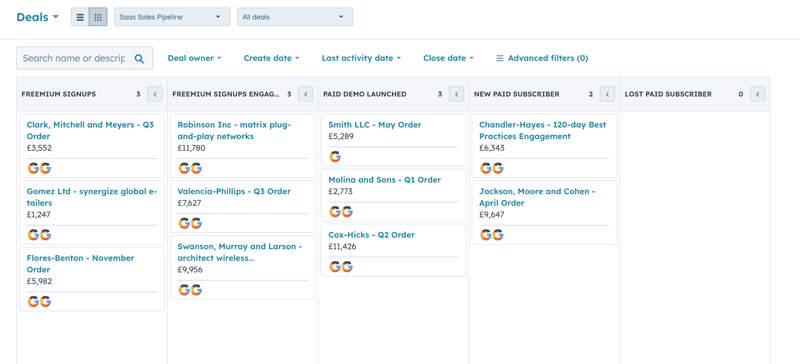
Raise the Sales Standard 🏅
Another reason why a Smart CRM can change the goalposts when it comes to growing your SaaS sales: set and adopt standards for tracking deal stages, so you can see at a glance where your prospects are at, and which actions to take next.
Sales progress best practice is essential if you want to outpace the competition. At AutomateNow, we strongly recommend setting up a personalised Deal Pipeline for your business, with 6-8 journey stages that you’ll move each client through. Too few stages, you’ll run the risk of oversimplifying, too many stages, you’ll make life hard for yourself!
The Deal Pipeline tool here not only lets you move a prospect from one stage to the next with a simple click, that then triggers a set of questions you can use to gather reasons on why the status has changed - e.g. if you lose a deal, what was the reason?
Being prompted to gather this data at every milestone helps you get more insights into both your prospects and your reps. And if you want to see the numbers, we’ve got you covered, too. You can get immediate insight into your sales forecast with integrated metrics that update as your sales do.
In HubSpot, you can log milestones as you pass them in the sales process. We recommend setting each milestone in the past tense to spark action - so rather than put it in the future-present "Send Contract" - you go for “Contract Sent.”
Not only does this motivate you to action (win!), but it also updates deal stages instantly across your team so everyone in the business can see how things are progressing or if they now have actions assigned to them.
HubSpot also helps you to set notifications for when deals are open, delayed, or closed - and what happens after that. Your activity history will also paint a very clear picture of any breakdowns or bottlenecks that might be occurring, so you can address them for good.
This is also essential when it comes to making the most of recurring deals. Never miss an opportunity to upsell or renew a client, and manage that process with ease.
The Real Sale Starts When the Deal Closes 🏆
It's a good phrase, isn't it? And here at AutomateNow, we really believe it. Whatever you do, don’t stop nurturing your SaaS customers post-purchase. The average customer lifespan with a B2B company can be anywhere from 2 to 4 years, but maximising customer lifetime value requires that you go above and beyond.
In simpler terms: continuing to provide value cements retention.
So just like the best B2B lead generation isn't left to chance, think strategically about how you can create onboarding workflows to make your client feel seen, loved, and looked after.
Make life easy by automating the onboarding process in your Smart CRM and setting up workflows and sequences that nurture via the client with well-timed emails, training resources, updates, and more. By automating this process, you not only drop the cognitive load of having to re-invent or think through your onboarding efforts, and you've got more time and space to think of more personalised, creative ways to look after your new client.
Smart B2B SaaS marketers will also collect customer feedback along the journey, addressing concerns quickly. For those of you who are on a HubSpot Service Pro package, you can even automate gathering insights by triggering an automatic Survey (one of our fave tools) when a deal is closed-won.
Smart marketing and sales teams also keep educating their customers through newsletters, content, and those all-important, human-to-human events.
And if you want to really take things to the next level, do the same automation exercise when it comes to client renewal. Plot content touchpoints and milestones leading up to renewal, and the market will give you what you deserve.
Ultimately, the goal is to create a virtuous circle with these effective SaaS lead gen strategies. Nurturing beyond the sale builds loyalty and boosts referrals - driving more leads back into your CRM funnel.
B2B SaaS Lead Generation Strategies: Let's Wrap Up!
With a Smart CRM and some smarter approaches, there are so many effective strategies to generate leads to your B2B SaaS business. A little extra strategising and planning, while leveraging marketing automation can create a huge impact on your bottom line.
Whether you're a SaaS startup or a well-established business, thinking carefully about the strategies that you can apply can be the key to unlocking leads for your business - it doesn't have to be a struggle. But if you're looking for an extra pair of hands in setting up that Smart CRM, we're here to turbocharge your business. Get in touch here for a quick exploratory chat.






